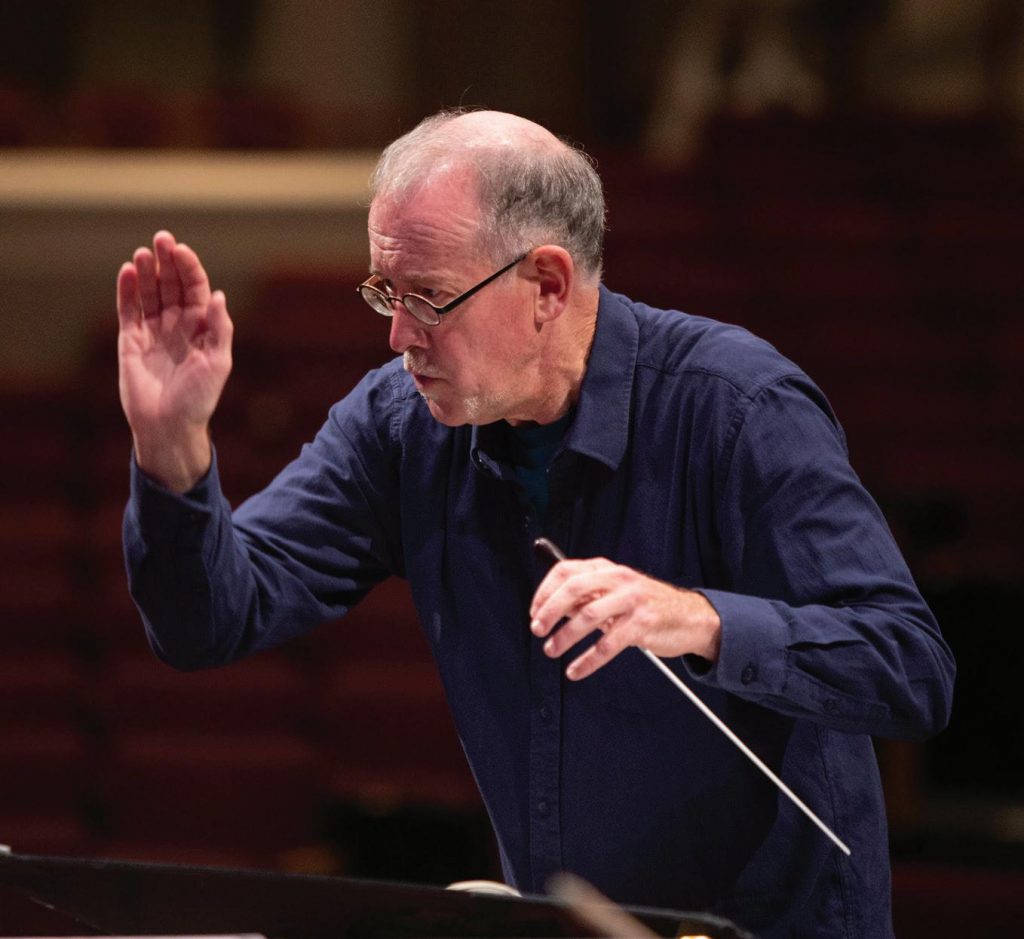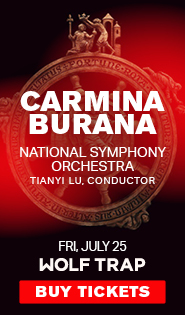Alexandria Symphony embraces innovation in its new live season

Conductor James Ross. Photo: Alexandria Symphony Orchestra
The Alexandria Symphony Orchestra returned to play before a full audience last month. For the ensemble’s second appearance, music director James Ross conducted a fascinating program Saturday evening at Schlesinger Concert Hall. In partnership with the Alexandria Film Festival, the ASO performed six American miniatures that accompanied short silent films created for or adapted to each piece of music.
Ross came to the ASO in 2018 after a long and distinguished tenure leading the National Orchestral Institute and teaching at the University of Maryland. His history of adventurous programming there has given him an edge in his new position, as American orchestras have all been challenged to adapt during the coronavirus pandemic and respond to cultural movements calling for greater involvement of women and minorities.
The program opened with Aaron Copland’s Suite from Our Town, music created for the movie adaptation of the Thornton Wilder play. The strings sounded especially lush in this idyllic music, an evocation of a model American town. Film and music together invited the audience to think of that ideal village as 21st-century Alexandria, rather than an all-white one in New England at the turn of the 20th century.
Even the theater company in the New Hampshire village that inspired Wilder’s play has restaged the work with an eye towards what a model American town is now. The new film that accompanied this elegiac music, by Andrea Kalin and Spark Media, did the same. It juxtaposed historical images of Alexandria with modern ones, including the controversial removal of the Confederate soldier monument that had stood at the intersection of Prince and Washington Streets for over a century.
For the “Clouds” movement from Roman Sketches, Charles Tomlinson Griffes drew inspiration from lines of poetry by William Sharp. Composed originally for piano, the planing harmony showed the composer’s affinity for Debussy and slyly introduced dissonance, styles that influenced Griffes during his student days in Berlin. The fact that Griffes died so young a century ago, one of the countless victims of the Spanish influenza epidemic in 1920, resonated as well.
Ross calmly righted a few moments of ensemble uncertainty, especially in coordinating lines across the orchestra in sparse textures. The corresponding film, directed by Alexi Scheiber, was a tribute to the natural splendor of Virginia, featuring the Blue Ridge Mountains and the state bird, the cardinal. These whimsical images, made by animation composed of charcoal and watercolor paintings, suited the wandering music.
Ross’s clear gestures fostered the rhythmic vitality that enlivens the “Manhattan Skyline” movement from William Grant Still’s The American Scene, specifically from the first of the work’s five orchestral suites, The East. Jane Pittman and Annette Brieger’s short film focused on the turbulent history of Washington’s U Street Corridor, the center of jazz history in the capital city, again featuring both the ups and downs of that vibrant neighborhood.
Copland originally created John Henry, his “railroad ballad for orchestra,” for a radio broadcast. Pulsating musical themes reference the African-American folk hero, a sledge hammer-wielding steel driver who died defeating a steam-powered device that did the same job. In the film by Shannon Washington, the African story-telling tradition of the griot seemed relevant, as did the rhythmic movements of Go-Go dancing.
Charles Ives conceived “Housatonic at Stockbridge,” one of his Three Places in New England, after a walk along that river with his wife. He later described how the mist clung to the water as they heard distant singing from a church on the opposing bank. Ross and the ASO gave this polystylistic mash-up a nostalgic, pastoral sheen, the rolling mists in chaotic violin figures and the missionary hymns quoted in the English horn and violas. The imagery in Tim McLoraine’s film was the closest to the musical content among the evening’s selections.
The quartet of two solo violas and two solo cellos also excelled in Jennifer Higdon’s Blue Cathedral, as did the flute and clarinet players. Higdon, a flutist, dedicated the work to the memory of her younger brother, Andrew Blue Higdon, who played the clarinet. The percussion section had its hands full with the raft of metallic percussion that adds a sentimental touch. Many other members of the orchestra joined in toward the end of the piece, adding the soft chiming sounds of Chinese Baoding balls. Michael Fallavollita cut a new shorter version of his film Tale of the Kite to make a silent short that went with this music.
Ross used selected movements from Mussorgsky’s Pictures at an Exhibition, broken up throughout the program, as the warp threads around which the American pieces, the weft part of the tapestry, were woven. The symmetry of the programming was clever, as Mussorgsky was inspired by visual art, the reverse of the films inspired by music. (The suite’s sixth movement, a portrait of two Jewish men squabbling, was omitted.)
Ravel’s technicolor orchestration proved the most challenging part of the evening, revealing some weaknesses in the horns and woodwinds. The tuba soloist in the “Bydlo” movement recovered after a rough start, but the low brass section was apocalyptic in strength together for the “Catacombs” movement. Despite some shortcomings, the ASO displayed a good level of ensemble polish, especially in the strings, making for a thrilling finish at the “Great Gate of Kiev.” The brass fanfares and clamor of bells rang in the exultant return of orchestral concerts in “our town,” Alexandria.
The program repeats 3 p.m. Sunday, without the film shorts, at the George Washington Masonic Memorial. alexsym.org

